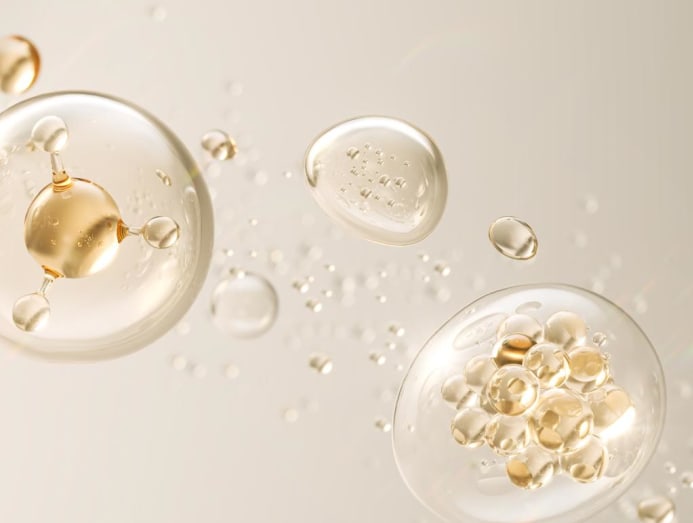What is PDRN – and why is salmon sperm the hottest K-beauty trend right now?
Is this active truly the amazing all-rounder it’s said to be? CNA Lifestyle gets the lowdown from medical professionals.

What is PDRN? Why is salmon sperm the hottest K-beauty ingredient? (Photo: iStock)

This audio is generated by an AI tool.
Unusual ingredients including sheep’s placenta, snail slime and bee venom, have emerged in trending skincare products over the years. These are much talked about for their supposedly unique skin-rejuvenating properties and efficacy – and, no doubt, for being an odd skincare ingredient.
The latest hit comes from the sea – specifically the sperm of salmon. You’d likely have already heard about it, although many might not be aware of its origins.
PDRN are four letters of the alphabet that have been on the lips of skincare fanatics. It’s not just novelty that’s behind all the attention it is getting – it’s said to have excellent skin-rejuvenating benefits. But what makes it different from other skincare ingredients and is it truly as effective as it is made out to be?
WHAT EXACTLY IS PDRN?

In full, it is known as polydeoxyribonucleotides, a substance derived from DNA that is known for its regenerative properties when used in skincare, according to Dr Shirley Kwee, medical director of Cambridge Medical Group. “It is extracted from the sperm cells of salmon or trout through a highly purified process,” she said.
Its unexpected source aside, what makes PDRN stand out, since there are many other ingredients that also boast skin-rejuvenating benefits?
It is extracted from the sperm cells of salmon or trout through a highly purified process.
“The DNA sequence in PDRN closely resembles human DNA, making it highly compatible with our skin and body. It has been extensively studied for its ability to promote cellular repair, tissue regeneration and wound healing,” explained Dr Kwee.
“PDRN works at a cellular level to stimulate skin regeneration and repair by activating fibroblast growth, which enhances collagen production and improves skin elasticity. It also promotes angiogenesis, or the formation of new blood vessels, improving skin hydration and overall texture,” she added.
On top of all that, it can improve the appearance of fine lines, wrinkles and acne scars, as well as strengthen skin barrier function, reduce inflammation and minimise the appearance of large pores. In theory, PDRN is quite the all-rounded performer, although its effects may vary from person to person, and also depending on how it is used.
A VIRAL K-BEAUTY TREND
As with much of beauty trends these days, PDRN took off in South Korea, where the world now looks to for the most interesting innovations in skincare and cosmetics.

While we have only really noticed PDRN now, Dr Rachel Ho, aesthetic doctor of La Clinic, noted that PDRN was already being used in Korea more than 10 years ago, and that PDRN shots actually originated in Italy.
“It gained popularity due to its impressive regenerative properties, and was initially used in medical fields for wound healing and tissue repair. The aesthetic trend started in South Korea, where the demand for non-surgical, skin-rejuvenating treatments is exceptionally high,” said Dr Kwee.
Topical skincare containing PDRN is generally safe for most skin types, except those with fish allergies.
You might have heard of Rejuran – a skin rejuvenation treatment that uses PDRN to improve skin health, which has been hugely popular in South Korea lately, as well as around the world. While the brand has by now become a familiar name, there are also other brands of PDRN intradermal treatments in the market.
“K-beauty’s emphasis on skin health and anti-ageing solutions led to the rise of PDRN-based treatments like Rejuran Healer. As more patients experienced visible skin improvement, its reputation grew, and it soon became a sought-after treatment worldwide, including in Singapore,” said Dr Kwee.
HOW IS PDRN BEING USED?
There various ways of using PDRN ranging from intradermal to topical delivery.
“The method of delivery significantly influences its efficacy and duration of results. Intradermal formulations allow for deeper penetration and longer-lasting effects. Non-invasive techniques, including microneedling or laser-assisted delivery, also enhance absorption but may require multiple sessions for optimal outcomes,” said Dr Kara-Anne Tan, senior aesthetics doctor at Cheongdam Korean Skin Management.
“The mode of administration is important because PDRN needs to reach the dermis (the inner layer of skin) to initiate the benefits,” added Dr Ho. She pointed out that PDRN has a large molecular size and is unlikely to penetrate the skin barrier (when used in topical skincare products) to be as effective as PDRN administered intradermally. "They will, however, provide some moisturising benefits when applied to the skin,” she said.
Want to give PDRN a go but not quite sure how to do so? It really depends on your skin condition, budget and the treatment mode you’re comfortable with. Dr Tan suggested using a combination of intradermal and topical methods to achieve the best results based on individual needs.
HOW SAFE IS PDRN FOR USE?
According to Dr Ho, the Health Science Authority has approved PDRN injections in Singapore in the form of Rejuran and Plinest. These have also received approvals from regulatory boards around the world for their clinical evidence and safety standards as intradermal treatments. They can also be combined with other treatments, such as lasers and radiofrequency microneedling, for synergistic effects.

“PDRN treatments are generally well-tolerated and considered safe for most skin types, including sensitive skin. Potential side effects, such as mild redness or swelling, are typically transient and resolve within 24 to 48 hours. The minimally invasive nature of these treatments ensures little to no downtime, making them suitable for individuals with busy lifestyles,” said Dr Tan.
Topical skincare containing PDRN is generally safe for most skin types, except those with fish allergies, said Dr Ho. There are also likely to be other actives in the skincare product, which may cause unrelated reactions in those with sensitive or acne-prone skin – be aware of these if you have such a skin type.
WHO IS PDRN BEST SUITED FOR?
One of the reasons for PDRN’s popularity in skin treatments is that it is highly versatile and can benefit a wide range of people. “They are particularly effective for individuals in their 30s and 40s seeking to address signs of ageing, such as fine lines, wrinkles and loss of elasticity. Additionally, PDRN is beneficial for younger people with acne and acne scars, post-inflammatory redness or hyperpigmentation, or compromised skin barriers,” shared Dr Tan.
The ingredient is also being used as a preventative treatment, as opposed to “reactive” treatments like Botox and fillers. “When PDRN first became mainstream, it was interesting in that it rejuvenated the skin by initiating repair and was also seen as a preventative anti-ageing treatment, since it builds collagen and strengthens the skin barrier,” noted Dr Ho.




